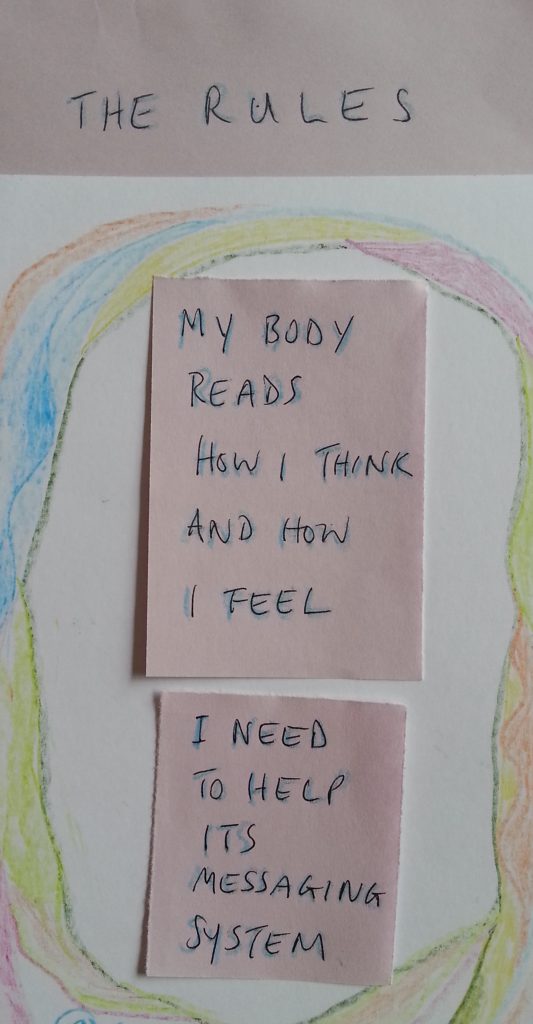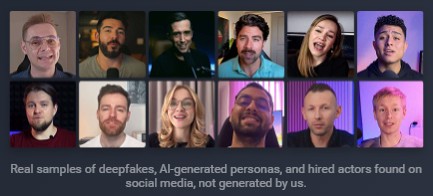
AI generated fake personas
To see what they’re doing, you have to first know about AI generated fake personas. This is what enables this kind of scam to operate.
Now, personas are a whole subject matter, as anyone with a marketing background already knows.
A persona is someone which marketers create to help them tailor their products for a particular client group.
Here is a description of a persona – I looked it up again, because it was a familiar word, in an unfamiliar context. How can a persona as used in Marketing be anything other than imaginary? This was my initial thought. I got the whole of this AI generated persona bit from AVG though, so I thought this wasn’t itself a bit of scaremongering. Turns out, I was right.
Al-generated personas use the latest Al technology to create fake yet convincing videos, usually to deceive people so their creators can steal money or infect devices with malware. Unlike deepfakes, these Al-generated personas aren’t pretending to be real people: they’re completely made up, and exist only online. So it is worth learning more about them, and how you can spot one.
So what should I know about Al-generated personas?
- The people depicted don’t exist in real life. The photographs are a composite put together by generating face types and sizes
- What happens? “AI Influencers” may try to scam people into losing money or downloading malware.
- Have you noticed ‘sponsored videos’ in your feed? Many such videos are “sponsored” by YouTubers who’ve had their accounts hacked. The hackers are now using it to generate income through the use of AI personas.
They’re often unrecognizable now, and will likely get more convincing as technology improves.
Example 1 : Thomas Harris gives financial advice
Meet Thomas Harris, an Al-generated persona offering to help unlock ‘Trading Views developer mode’, claiming that doing so will provide Al-powered indicators to help portfolios grow significantly.
Now, the chances are that those who have no grounding in developing software will not even be contemplating accessing this – but everyone has portfolios – and even if you were thinking ‘here is a useful tool – maybe if I can get into a mode which is usually available to developers I would be able to get advance bits of analysis – you might be tempted to click on it, see what needs to be done, and specify that to someone who does this sort of work piecemeal.
However, instead of unlocking the functionality, running the advertised command executes a remote access trojan (RAT) or Lumma Stealer.
No, I didn’t know what one of those was, and was startled to find that there is now a service being offered which instead of Software as a Service (SaaS) – like Microsoft 365, there is now Malware as a Service on offer as well.

Analyse what you’re looking at first
- Walk to the other side of the table – Why would they make the offer? If it looks too good to be true, and doesn’t make much sense, then it is. Trust your instincts, and your analysis.
- The sponsored link (usually in your Facebook or Messenger feed) has a channel name. Check it. In fact, don’t just check the channel name: look at the @handle. Stop for a moment and run a compare and contrast exercise – how does this differ from what you already know? If at all, move on.
- Check other videos on the channel: do they have the same @handle as the suspicious video? If not, it may a scam.
- If you know of the channel, and that’s why you are there, think for a moment – is this video different from what the YouTuber usually puts out? If it’s a face you know, are they present or not? Does it make sense that this video would be unlisted?
- Check the description of the video and the channel hosting it. Scam video descriptions might read very differently from the description of the channel itself.
Asking you to run a command on your PC? RUN Away FAST. Also, run away, (and by that I mean do not click) if they have asked you to previously click a link to another website and start interacting with them.
That is the most conclusive ‘tell’ that this is a scam.
You should only do that if you’re 100% sure of what you’re doing.
Telephone approach
You can be called up to ask you to run a code on your computer too. I have experienced this myself. They will ask you to go to a page which is blank, apart from a blinking prompt – C:\
If you get that far, then you have gone just shy of far enough. (I did – but then I started thinking – this is the page where we enter code, right? Then the economist in me sat up, musing gently. I stopped typing.)
Don’t type in what they ask.
The moment they noticed that I had not typed what they had asked, they rang off.
It cannot be an economical use of ANYONE’s time to read out a bit of code to an individual to ‘help them out’ with a problem or achieve a quick resolution of something which was bugging them – the employer of the person must have a vision of a financial return from employing the person who is reading out the code to you.
There is an economist in you too – wake that person up.
Example 2 : Meet Michael, Todd, Jane, and Ben – all with fake videos

Deep-faked, Al-generated, or performed by a hired actors — there are a lot of ways to make fake videos. They are used for all kinds of purposes. The ones that make money for the scammer have one thing in common: they will most likely provide tutorials on how to get rich easily, using online IDE platforms for smart contract development.
But instead of easy money, victims are scammed into copying malicious code that will steal their money. In short, it’s just a trading bot scam.
Here is what you need to look out for:
- Multiple videos exist with the same person and similar content across multiple channels under different @handles.
- They promise easy money if you run some code — remember, if it’s too good to be true, it probably is!
- You cannot easily find the person, or person they claim to be, anywhere online.
Stay real, stay safe, stay you
Deepfakes and Al-generated personas are becoming increasingly common, blurring the line between reality and fiction.
This means no matter how sweet the deal is or how much you trust someone online, you always have to be cautious.
They now call it Malvertising.
Compromised YouTube accounts can cause a lot of damage in a very short time, so staying one step ahead is more important than ever before, especially if it involves money.
Fortunately, no matter how many fake, Al-generated people are on the web, you’re real and still here, and you can think for yourself !
If you’re interested in Leaming more about Al-generated personas, do read the blog post from AVG’s Threat Labs!